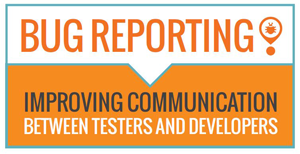In this day and age, your software has to perform and adapt to a multitude of platforms. Mac OS, Google Chrome, Windows, Internet Explorer…the list goes on. You not only have to worry about browsers and operating systems, but also updates that lead to various versions performing on various devices. Needless to say, it can get complicated. That’s where compatibility testing comes in.
What is compatibility testing?
The purpose of compatibility testing is rather simple—it checks to make sure that your software is capable of running on various hardware, operating systems, applications, devices, and more. In other words, it ensures that your software can perform on both a Windows XP computer and an iPhone 11 Pro Max.
The types of compatibility testing
There are several types of compatibility testing that check for compatibility with different platforms. They include:
Hardware
Here compatibility testing uses different hardware configurations to check compatibility.
Operating System
Compatibility is checked with all major operating systems such as Windows, UNIX, Mac OS, etc.
Software
This ensures that your software is compatible with other types of software such as Microsoft Word or Outlook.
Network
This examines various parameters such as bandwidth, capacity, speed, etc. to evaluate your software’s performance.
Browser
Firefox, Google Chrome, Internet Explorer, Opera…compatibility testing checks that your software can perform on all of these major browsers.
Devices
This checks compatibility with commonly used devices such as USB ports, printers, scanners, bluetooth, and more.
Mobile
Similar to checking compatibility with operating systems, this also checks compatibility with Android, iOS and other mobile platforms.
Versions
Over time, software changes. This results in different versions performing on different devices. This type makes sure that your software can perform on all of these different versions (or, at least, the most recent versions).
Backward vs. forward testing
Once you perform a compatibility test, it will perform two types of tests: backward and forward testing. Backward testing verifies that your software is compatible with older versions of a platform. Forward testing, on the other hand, verifies that your software is compatible with newer versions of a platform.
We at Beta Breakers Quality Assurance Labs are well-versed in compatibility testing. It’s why we have five distinct labs within our facilities dedicated to this type of software testing. So, if you have further questions or if you’d like us to test your software, then give us a call today at 415-878-2990.


 With Experience in Quality Assurance & Testing Desktop Software, Mobile Apps, Websites & Web Applications for Nearly 30 Years Beta Breakers has become the Premier Software Quality Assurance Labs and Application-Testing Provider -
With Experience in Quality Assurance & Testing Desktop Software, Mobile Apps, Websites & Web Applications for Nearly 30 Years Beta Breakers has become the Premier Software Quality Assurance Labs and Application-Testing Provider - 


Leave a Reply